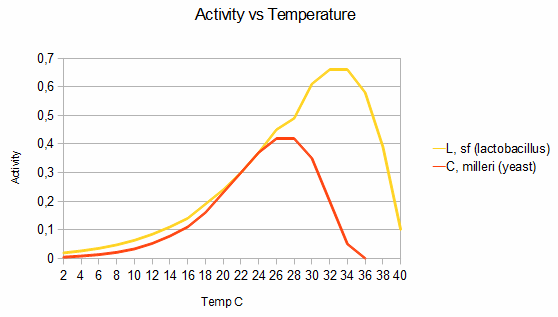OK....
Just when I thought I had the recipe perfected - using Marino Tipo 00 - I thought I'd give Caputo another try, this time using their Classica 00. Put simply; this was all I could obtain in the time available.
So, having attempted to prove the dough at 40c for about 2.5 hours, I was somewhat unsettled to see no signs whatsoever of it rising.
I formed the doughballs anyway, and left them overnight in the garage at about 10c. (Sorry guys, I just don't understand Fahrenheit.)
About 15 hours later, they still look pretty flat. Time will tell of course, but given that I shall be making these to take to some friends, it could be a bit of a disaster - especially if they don't stretch without splitting (the doughballs, that is)!
Update: They stretched OK, but did not inflate or bubble up during cooking. Leoparding was good, but otherwise really not great.
I had good results with the Caputo "Pizza Chef" flour a couple of years ago, but switched to Marino due to (1) availability, and (2) its superior taste and texture IMO.
Has anyone else had flat dough with Caputo?
(By the way, it's a new batch with at least 9 months remaining shelf-life.)
Just when I thought I had the recipe perfected - using Marino Tipo 00 - I thought I'd give Caputo another try, this time using their Classica 00. Put simply; this was all I could obtain in the time available.
So, having attempted to prove the dough at 40c for about 2.5 hours, I was somewhat unsettled to see no signs whatsoever of it rising.
I formed the doughballs anyway, and left them overnight in the garage at about 10c. (Sorry guys, I just don't understand Fahrenheit.)
About 15 hours later, they still look pretty flat. Time will tell of course, but given that I shall be making these to take to some friends, it could be a bit of a disaster - especially if they don't stretch without splitting (the doughballs, that is)!
Update: They stretched OK, but did not inflate or bubble up during cooking. Leoparding was good, but otherwise really not great.
I had good results with the Caputo "Pizza Chef" flour a couple of years ago, but switched to Marino due to (1) availability, and (2) its superior taste and texture IMO.
Has anyone else had flat dough with Caputo?
(By the way, it's a new batch with at least 9 months remaining shelf-life.)






 products--IMHO)...many big commercial bakeries for example.
products--IMHO)...many big commercial bakeries for example.



Comment